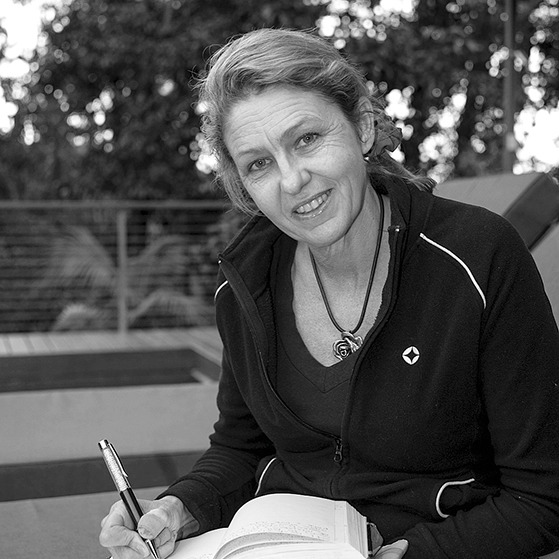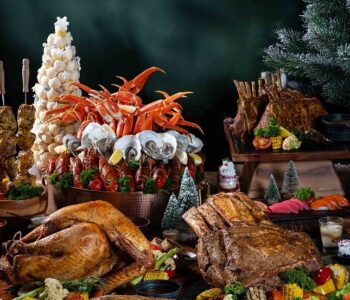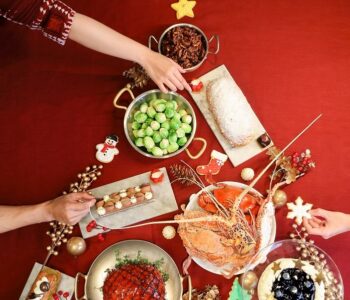The long trek to the village of Jungutan, East Bali, the site of the Karangasem World Cultural Village Festival is well worth it.

Imet Miliwanga Wurrben, an Australian aboriginal elder and healer, in a most unlikely place. We came across each other in the remote village of Jungutan in Karangasem, East Bali under the shadow of Mt Agung. I had travelled from Candi Dasa on the coast to get to the village, with only a worn flyer from a local café to guide me. I followed narrowing roads for around thirty minutes which took me through a series of traditional villages and a small bamboo grove, passing many ancient temples on the way. Mili was sitting surrounded by traditional mats woven from sand palm leaves. “This mat has been dyed with earthy pigments”, she said, pointing to one which lay directly in front of her. “We use natural bush dyes to get the colour. And here, take a look at this woven dilly bag.” Passing the bag to me, Mili went on to explain, “You can see our work is a little different from our neighbours’ over there, the Baduy. All these mats and baskets I have brought from Australia are made by my people from Arnhem Land in the far north of Australia. I am from the Rembarrnga Tribe, and my clan is called Mirratja”.
The people from Arnhem Land and Indonesia have indeed had neighbourly relations for a long time. There is evidence of trading between indigenous Australians and indigenous Makassans since the 1600’s. In fact, many words in Yolngu-Matha languages spoken in Central, North-West and North East Arnhem Land originate from the Macassan language. Next to Mili were a pile of green leaves, which came from the ironwood tree and are considered sacred. They had been brought from Australia especially to be used for a smoking ceremony during the Karangasem World Cultural Village Festival. Beside the aboriginal display, a collection of Dayak rattan baskets from the forests of Kalimantan lay spread across a table, along with a range of colourful Dayak beads and hand-woven textiles.


I made my way to the nearby Baduy display, where a young man immediately struck up a conversation with me. “We Baduy are from West Java. There are two kinds of Baduy, the Baduy Dalam who live in inner Baduy village and the Baduy Luar who live in outer village”, he said. “Only people from the outer village were allowed to attend this festival because coming here from Java, we needed to use a wheel and for the Baduy Dalam it is forbidden to use anything with a wheel. Life is very traditional for them, and their society is somewhat closed. They are not even counted in the census. They are very pure people, following their own coded writing system, religious order and traditional farming practices. Foreigners are not permitted to visit the inner village. But, for me, I can go in and out, because I am Baduy Luar. So, I have been able to bring all these things here to sell.”
Picking up a bottle of Baduy palm sugar, the young man said, “If you would like to buy this, you can, but you cannot buy all these bottles. We never allow a person to buy all our supply, even at home when we are selling from our street vendor carts. We consider it greedy if you buy too many, because others must have a chance to buy too. This is what we believe.” The Baduy’s table was covered with beautiful indigo cloth, natural weaving bags, and exquisite textiles. “Everything is handmade, including the traditional clothing I am wearing. We even spin the cotton ourselves. Please come and visit us next time you are in Jakarta”, he added. “Our village is only 167 kilometres from Jakarta, and you can stay in one of our homestays. We have a beautiful river which you cross using a long bamboo bridge. We receive lots of guests and really love to share our culture.”

Indeed, it is festivals like this that bring people together. Meeting several indigenous cultures highlights their richness, and allows us to see firsthand how Indonesia is home to some of the world’s oldest living cultures. Wonderful connections are made at such events. I even made friends with a Mentawai man and enjoyed a long conversation, even though we did not share a word in common. Somehow with expressions and gestures, we made jokes and were able to laugh together and get along just fine.
As the sun was setting behind Mt Agung, the arena around the stage started to fill with locals from the surrounding villages. Dignitaries and government representatives from Karangasem addressed the crowd. They all highlighted their respect for diversity and for the indigenous cultural values represented by the 16 indigenous artists from overseas and the 20 indigenous artists from Indonesia who were taking part in the event. As a special honour, the aboriginal Rembarrnga Elder, Miliwanga Wurrben, and Larrakia woman, medicine artist Nadine Birrimi-Lungga Lee, had been invited to perform their sacred smoking ceremony to open the event. This ancient ritual is performed by every clan and tribal group across Australia to this day. It involves smoking ironwood tree leaves in a fire. Even though they remain green, they still produce smoke. The purpose of the ceremony is to cleanse and unify those who have gathered.

A spirit of unity was indeed present and, over the next three days, we were treated to traditional dances from Kalimantan, Sumba, Sumbawa, Tenganan, Laos, Java, New Zealand, Australia, Taiwan and Japan. These performances were accompanied by traditional musical instruments unique to each tribe. On Saturday night, the Maoris gave a powerful performance of the haka to an audience of 1,000 people. A commanding performance by an Indonesian dance collective called “Mepantigan Katos”, also dazzled the crowd. The dancers appeared on stage wrapped in claras (dried banana leaves) wearing ornate body paint and were accompanied by a gamelan orchestra with choreographed performances involving arrows, spears and whips. The crowd were both mesmerised and delighted by it all. I don’t think anyone there had seen a performance quite like it.
At the end of the festival, Mili summed it up perfectly, “Nadine and I felt a strong connection with all the delegates. As indigenous Australian women, we shared a common spiritual knowledge and a history of ancient traditions with many of the people we met. The festival was the most enriching experience we have had in a long time. It fed our spirits, educated our minds, connected our histories, bringing unity to indigenous people and affirming the special place and spirituality of indigenous people in the contemporary world. We definitely want to come back next year, and we will bring a larger delegation to perform a full bungul or corroboree. In this dance ceremony our people tell the ancient Dreamtime stories through dance, music, costumes, cultural ornaments and body paint. We look forward to sharing and explaining our sacred rituals and the meaning behind our ceremonial ornaments with everyone. I am excited about that”.
Exploring east Bali and heading up into the hills towards the heart of Karangasem was an adventure in itself. Bali is full of surprises and the beauty of extraordinarily experiences like this can often be found, as your explore some of the lesser known regions on the island.

Karangasem World Cultural Village Festival Nov 23-25, 2018
Jungutan Village, Karangasem, Bali
The festival was themed “Weaving Identities Celebrating Culture”. The focus was to create dialogue among different cultures and allow for a sharing of wisdom, customs, rituals, knowledge and performance combining local tribes with international tribes. Hosted by the Government of Karangasem in conjunction with Karangasem Destination Branding activation program “Karangasem. The Spirit of Bali”, support also came from the Ministry of Tourism. The beautiful stage and venue at Jungutan Village was purpose built for a ceremony called Baligia Atama Wedana which took place between January and August, 2018. The ceremony involved 606 Puspa (souls of the deceased) which consisted of 86 Puspa Ida Pedanda, Puspa Walaka Besarta Sangge and 520 Companion Names (from other castes). The participants came from various regions in Bali and were supported by approximately 10,000 heads of families. The main purpose of the Baligia Atama Wedana ceremony was to offer sincerity and sacrifice, and to purify and glorify the spirit of the ancestors in the hope of reuniting to the creator, Ida Sanghyang Widi Wasa.
Karangasem World Cultural Village Festival Participating Artists:
The participating artists came from 6 countries and 12 Tribes: New Zealand Maori, Australia Aborigine, Laos Khmu, Taiwan, Japan, West Java Baduy, Kampung Naga, Rancakalong, Sumatra Mentawai, Kalimantan Dayak, Sumbawa and Bali Tenganan.
_______
This article is originally from paper. Read NOW!Jakarta Magazine Jnuary 2019 issue“Celebrating 10 Years of NOW!JAKARTA”. Available at selected bookstore or SUBSCRIBE here.







